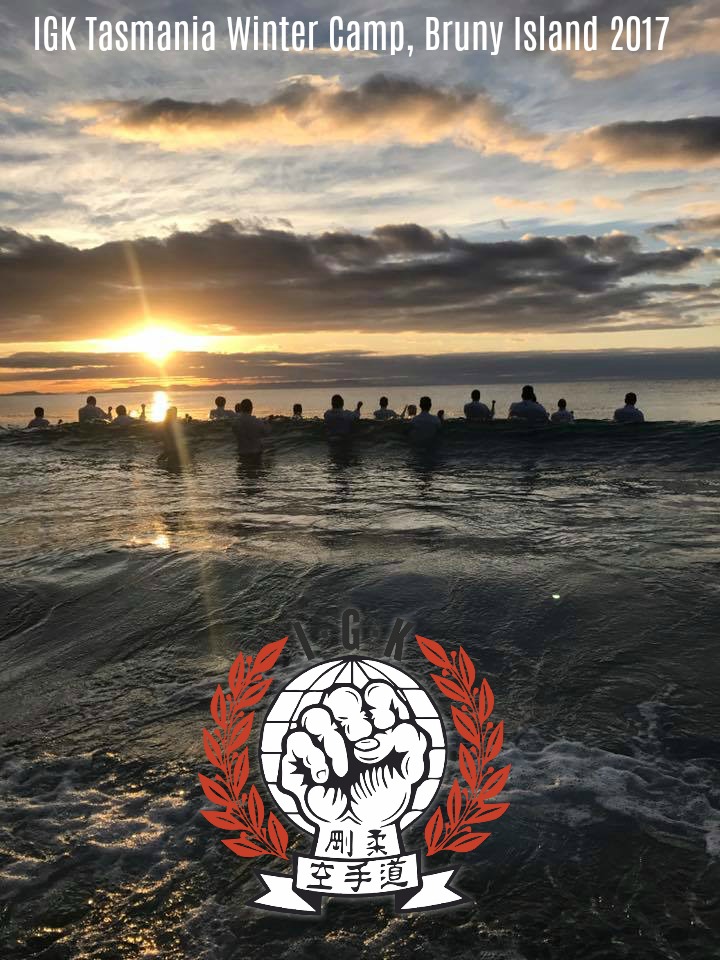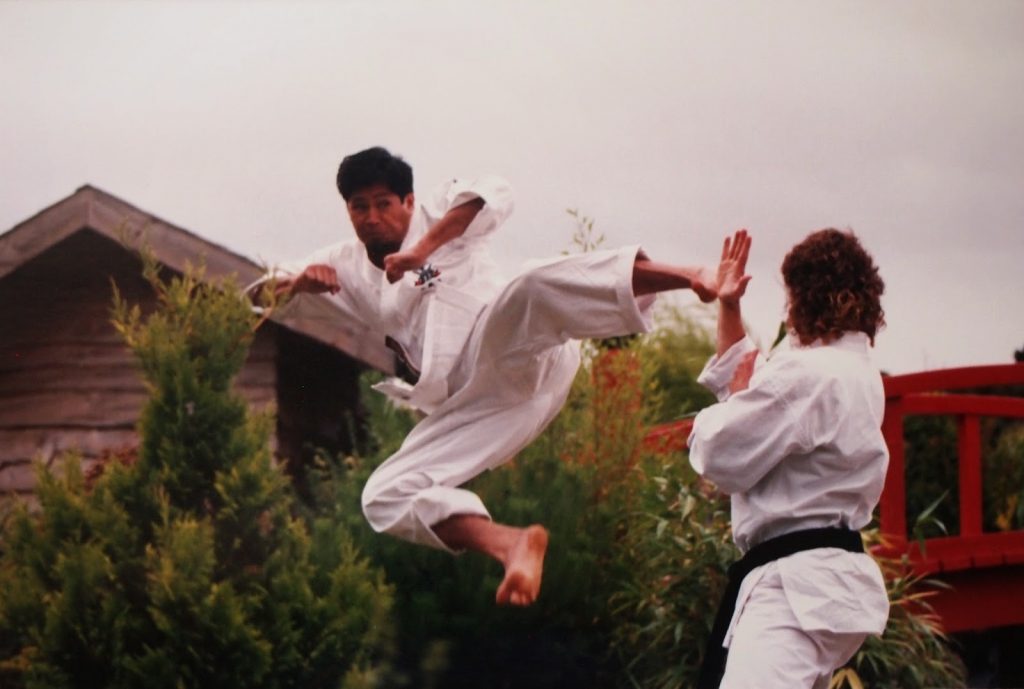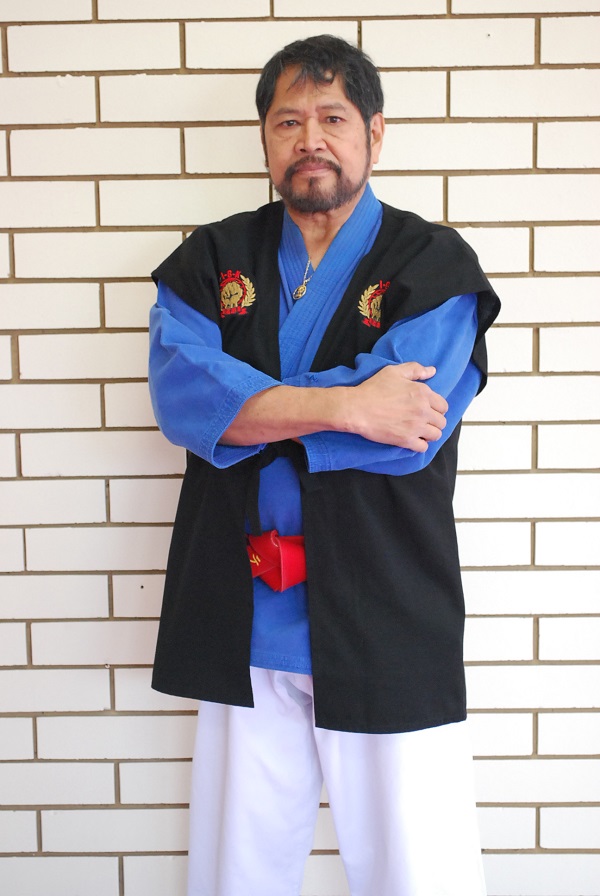Significance of the symbolic caricature featured
The hour glass signifies time, the very element that influences the GAP that exists when considerations of subjectivity suppresses thought. In creative thinking, one places all objectives into a desire of taking on the time factor as an advantage translating the GAP as Goals, Aims, and Purpose.
In practice of this system, the rudiments of Goju Karate are firstly hard features in practice physically, this is followed by the slower and seemingly softer method as maturity appears to become soft or passive, a natural trait as in biological features of the physical body settling to a relaxing mode.
Why the feature of the hour glass? The circular base of this featured glass structure is round. The foot position of the standing practitioner is placed in what is called the Sanchin stance or better named as the hour glass stance. It is a three point stance where the position of the feet is based in three distinct angles. These three angles will become like suction cups, locking in the foot work to gripping vice like strength where a hold on any standing position on the floor will be the feature of this form.
Centralized strength develops from this form. It will be noted with proper coaching that ability gained from this form creates balance and the overload on muscle development with isolation to each muscle group.
Most important to this activity is the breathing or the word in Japanese nomenclature – Kokkyu.
Let me guide you through this as it may complicate the understanding of what one means by breath enhancement. Knowing the nature of why we breathe, what the oxygen that we breathe does to our function as in blood stimulation and the activation of our life giving attributes – FUNCTION in a more specific description.
Unbeknown to many, our life force as in energy is dependent on the breath and all its provisions in what it does to our entire function. Many combative arts of the orient have known that breathing properly sustains this energy and that endurance is only a portion to this feature as other areas include power of lift, directional push, retention of energy to expose on precision at given moments to explode force. These may describe more the martial artist’s explanatory measures in practice to this function.
Observe the manner of breathing of the untrained person. Gasping for air would be more the description of breathing particularly after enduring some activity, and one in ten is conditioned otherwise to the body this way. Compare than with the crying infant who may go on for long periods of time with out stopping and seemingly not tire.
Yes, the difference is in the breathing from a lowered depth using full in and out of the lungs method. For most, breathing from the upper feature of the lobes are common as the nature of sedentary life gives that part of function a low priority to proper breath development.
Sports people are definitely practitioners of breath development as in constant exercising and without thought to this very precious form of existence.
An in having described the breathing advantages hopefully your understanding then appreciate the feature of this Hour glass form to be the position to practice this activity with a difference. Unfortunately, one must undergo the practice of this form with a coach who knows the exercise and can accurately assist the practitioner in understanding its attributes.
The hour glass stance is a position with poise to indicate uprightness, and other elements such as the central taper as in the central part of a persons body becomes another formation to be studied.
In physics one can only experience in detail the actual advantage of use when practicing the exercise under scrutiny until each feature is retained in memory. Instinct will then prepare the way for many encounter to why such an exercise is the hard study of this art. It has been described as three battles; the mind, the body, and the soul. Locate this in the study and it becomes a life long companion to the ideal in training of the ‘Way’.
It has been written that ‘ Your body is precious. It is your vehicle for awakening. Treat it with care’. – Buddha ‘
Goju’ an ideal, its conceptual attributes and intellectual properties compliments progressive research and practice for the serious practitioner.
The definition of this word means hard and soft. Derivatives of this may be as Yin and Yang, or night and day, lightness and darkness. On and on it goes with the very principle of the natural elements evolving from start to finish.
So why the chosen word and how it remains unchanged as it meant a system with aesthetic character. This is the beginning of the search.
‘We shall not cease from exploration and the end of all our exploring will be to arrive where we started and know the place for the first time’. – T.S. Eliot
Hanshi Tino’s personal philosophy ‘Its not the style but the man’ is self explanatory to the previous passage. The Goju system is a name a generic to many other concepts and analogy.
In view of Hanshi’s development and continued propagating of new ideas as well as drills to compliment all techniques be it from one system or discipline from another, it is of direct interest for all those in training of this system, that this is a guideline by way of the O.S.C.A.P. its acronym of Origin and concept, Science of study, Course of rudimental progression, Attributes, Propagation and continued study.
– Written by Hanshi Tino Ceberano 2011

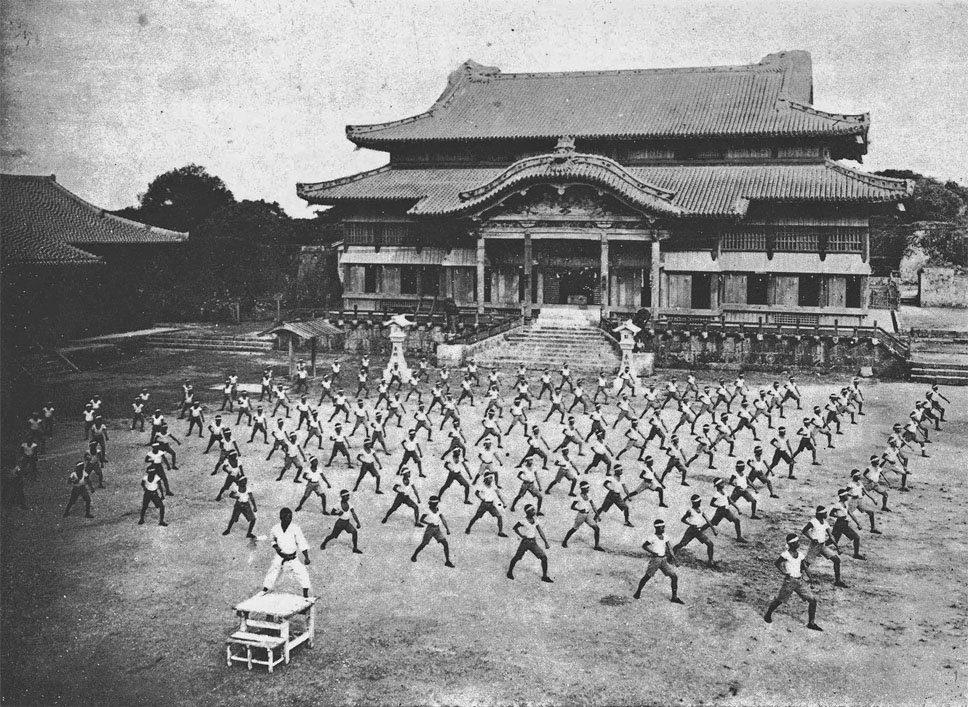
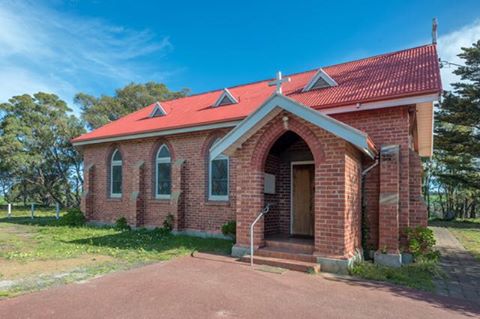
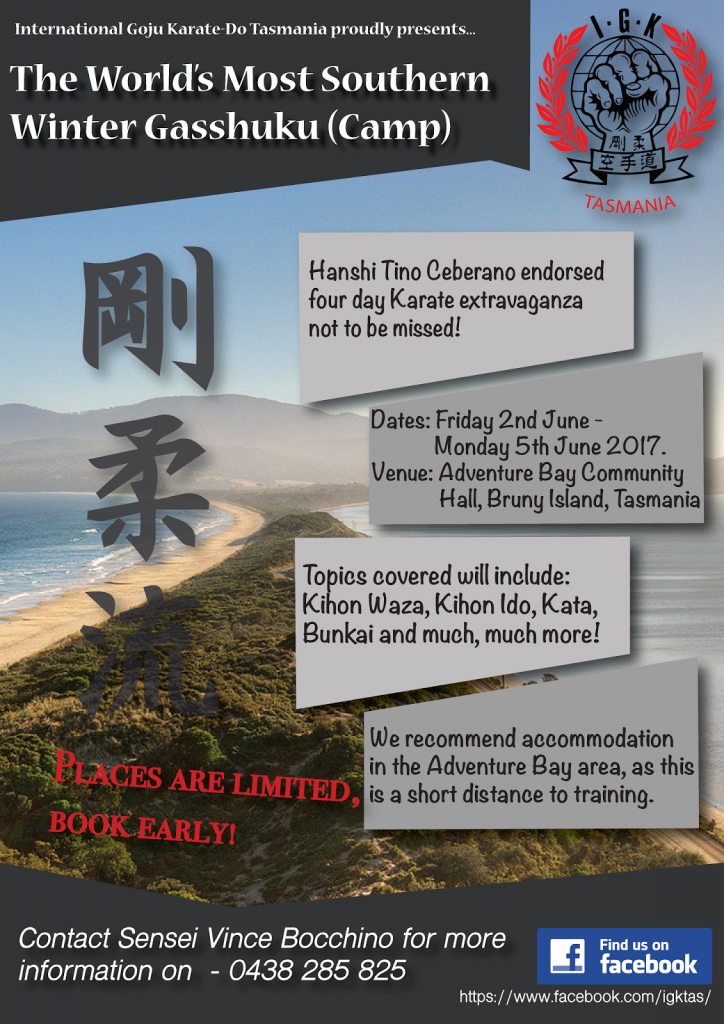 IGK Tasmania will be hosting a Winter Gasshuku (Camp) at Bruny Island from Friday 2nd June until Monday 5th June 2017.
IGK Tasmania will be hosting a Winter Gasshuku (Camp) at Bruny Island from Friday 2nd June until Monday 5th June 2017.